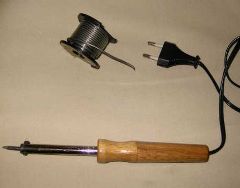 Solder is a low-melting metal alloy intended for connecting wires, leads, parts and components by soldering. Previously, solders were designated by three letters - POS (tin-lead solder), followed by a two-digit number showing the tin content in percent, for example POS-40, POS-60.
Solder is a low-melting metal alloy intended for connecting wires, leads, parts and components by soldering. Previously, solders were designated by three letters - POS (tin-lead solder), followed by a two-digit number showing the tin content in percent, for example POS-40, POS-60.
The best solder is pure tin. However, it is expensive and is used in exceptional cases. During radio installation, tin-lead solders are most often used. By the strength of soldering, they are not inferior to pure tin. Such solders are melted at a temperature of 180 - 200 ° C.
The choice of solder is made depending on such factors: from the metals or alloys being joined, from the brazing method, from the temperature limits, from the size of the parts, from the required mechanical strength, from the corrosion resistance, etc. Soldering with a melting point is used to solder thick wires ...
How to choose a soldering iron and organize a soldering workstation
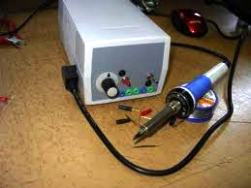 Soldering iron is the main tool for soldering. The convenience with which you solve the tasks depends on its correct choice. Soldering irons vary in design and power. Rod sticks are available with ceramic and spiral heaters. Soldering irons with spiral heaters are practical and durable, but they warm up for a relatively long time. Ceramic soldering irons heat up much faster, but at the same time require careful use and a very careful attitude, since any blow can damage such a soldering iron.
Soldering iron is the main tool for soldering. The convenience with which you solve the tasks depends on its correct choice. Soldering irons vary in design and power. Rod sticks are available with ceramic and spiral heaters. Soldering irons with spiral heaters are practical and durable, but they warm up for a relatively long time. Ceramic soldering irons heat up much faster, but at the same time require careful use and a very careful attitude, since any blow can damage such a soldering iron.
According to their power, soldering irons can be different. Traditional soldering irons have the following capacities: 3 - 10 W soldering irons are designed for desoldering very small microcircuits, 20 - 40 W soldering irons are considered household and amateur radio, 60 - 100 W soldering irons are used, for example, car service employees use for soldering thick wires, 100 - 250 W soldering irons use for sealing ...
What is soldering? Soldering Safety
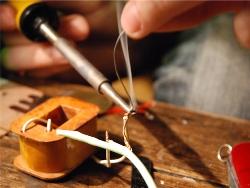 One of the most useful skills of any person professionally associated with the maintenance and repair of various electrical and electronic devices and devices is the ability to solder. In this article we will consider the basic concepts and rules that you must know before proceeding with the soldering itself. The main emphasis in the article is made on the consideration of safety rules when soldering.
One of the most useful skills of any person professionally associated with the maintenance and repair of various electrical and electronic devices and devices is the ability to solder. In this article we will consider the basic concepts and rules that you must know before proceeding with the soldering itself. The main emphasis in the article is made on the consideration of safety rules when soldering.
Brazing is a method of joining metals using another, more fusible metal. The soldering process is the penetration of one substance (metal) into another at high temperature, which provides after hardening of the solder mechanical strength and high electrical conductivity of the connection. Soldering usually occurs at high temperatures of soldered surfaces and molten tin (from 180 to 250 ° C). In this process, one of the metals is the welded conductors, the second is solder ...
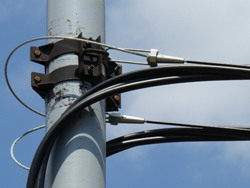 Among the whole variety of cable laying methods and wiring devices, wireline wiring stands apart. The need for it may arise if the surrounding building structures have a very complex terrain and are interspersed with large voids. This is possible, of course, only in production and storage facilities, as well as in the open air. After all, the inner walls of comfortable houses, offices and apartments are always more or less even, and you do not want to disfigure them with a string or cable with a bundle of wires, although the rules do not prohibit this.
Among the whole variety of cable laying methods and wiring devices, wireline wiring stands apart. The need for it may arise if the surrounding building structures have a very complex terrain and are interspersed with large voids. This is possible, of course, only in production and storage facilities, as well as in the open air. After all, the inner walls of comfortable houses, offices and apartments are always more or less even, and you do not want to disfigure them with a string or cable with a bundle of wires, although the rules do not prohibit this.
So, cable electrical wiring is, as the name implies, wiring for which the supporting element is a cable or string made of galvanized or dyed wire rod. This is the fundamental difference between cable wiring and overhead power lines.In overhead lines, the supporting element is the wire or cable itself ...
About Ohm's law in a popular statement
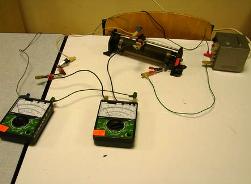 Electric current and hazardous voltage cannot be heard (except for humming high-voltage lines and electrical installations). Live parts under voltage do not differ in appearance.
Electric current and hazardous voltage cannot be heard (except for humming high-voltage lines and electrical installations). Live parts under voltage do not differ in appearance.
It is impossible to recognize them both by smell and by elevated temperature in normal operating modes, they do not differ. But we turn on the vacuum cleaner in a silent and quiet outlet, click the switch - and the energy seems to be taken from nowhere, by itself, materializing in the form of noise and compression inside a household appliance.
So, we will consider one, the most valuable law of electrical engineering, which is useful to know. And try to do it in the most popular form possible.
The most important law of electrical engineering is, of course, Ohm's law. Even people unrelated to electrical engineering know about its existence. But meanwhile, the question “Do you know Ohm’s law?” in technical universities is a trap ...
How to do splicing and branching wires using twisting
 When repairing electrical wiring or home electrical appliances, quite often the question arises of splicing electrical wires or creating a branch of the electrical network. The main task in this case is to ensure high-quality electrical contact at the junction of the wires and its reliable insulation.
When repairing electrical wiring or home electrical appliances, quite often the question arises of splicing electrical wires or creating a branch of the electrical network. The main task in this case is to ensure high-quality electrical contact at the junction of the wires and its reliable insulation.
Splicing wires ccool. When preparing the wires for splicing (branching), it is necessary to free a section of the wire from insulation. When using special tools to remove insulation, this operation takes a minimum of time and does not require skills from the master.
But, as a rule, only sharp knife is listed in home tools, and then you need to keep in mind some simple tricks: you can not cut the insulation by holding the blade of the mounting knife perpendicular to the wire ...
Why electricians are not always friends with electronics. Part 2. How to study electronics
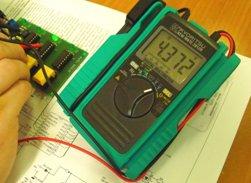 Some electronic devices are galvanically isolated from the lighting network. Therefore, compliance with safety rules will not be superfluous, but this is a topic for another article, and there have already been many such articles written, those who wish can read on their own.
Some electronic devices are galvanically isolated from the lighting network. Therefore, compliance with safety rules will not be superfluous, but this is a topic for another article, and there have already been many such articles written, those who wish can read on their own.
The element base is what electronic circuits consist of, in other words, these are parts that are soldered to printed circuit boards. And the entire elemental base cannot be described even in a huge thick book: for example, the online store of radio components “Elitan” offers customers over one million items of goods from more than a thousand manufacturers from around the world.
Almost all modern electronic equipment is assembled on an imported, quite simply, bourgeois element base. But in this regard, one should not particularly be upset, since the documentation for almost all microcircuits ...
Why electricians are not always friends with electronics
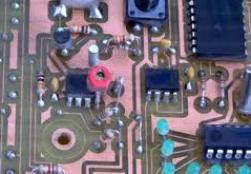 Now, thanks to the efforts of our Chinese brothers, various electronic devices are increasingly penetrating even into household wiring. These are various electronic calls at the front doors, Christmas lights and garlands, sockets and switches that are triggered by a television remote control, devices for extending the life of incandescent lamps (delay when turned on), photo sensors to turn on lighting, electronic transformers to power low-voltage halogen lamps, spotlights with motion sensors and more.
Now, thanks to the efforts of our Chinese brothers, various electronic devices are increasingly penetrating even into household wiring. These are various electronic calls at the front doors, Christmas lights and garlands, sockets and switches that are triggered by a television remote control, devices for extending the life of incandescent lamps (delay when turned on), photo sensors to turn on lighting, electronic transformers to power low-voltage halogen lamps, spotlights with motion sensors and more.
Energy-saving lamps, popular recently, inside their base have a simple electronic circuit with only two transistors. And fluorescent lamps, remember, those with roaring chokes and blinking when turned on? Now, instead of chokes, electronic ballast is used ...
